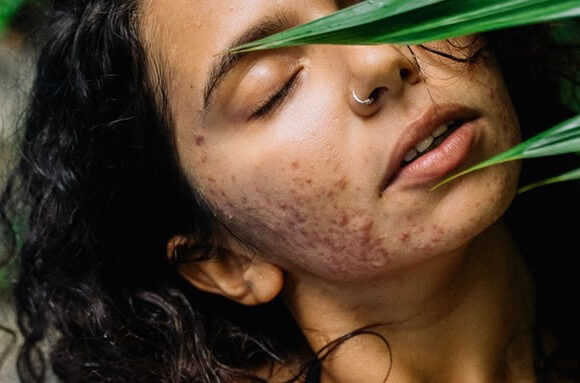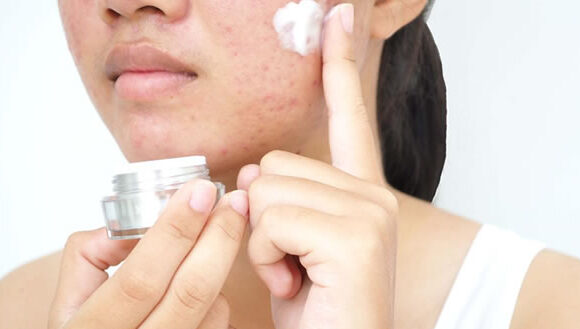Acne is a common skin condition that affects millions of people worldwide. It can manifest in various forms, including hormonal acne and fungal acne.
While both types share similarities in appearance, they have distinct causes and require different treatment approaches.
Understanding the differences between hormonal and fungal acne is crucial for effectively managing and treating these conditions. This article will explore the characteristics, causes, and treatment options for hormonal and fungal acne.
Hormonal Acne

Hormonal acne is a type of acne that is primarily influenced by hormonal imbalances within the body. It often occurs during hormonal fluctuations, such as puberty, menstruation, pregnancy, or menopause. Hormonal imbalances can disrupt the normal functioning of the skin and lead to the development of acne.
Causes Of Hormonal Acne
By exploring the following factors, we can gain valuable insights into the underlying causes that contribute to the development of hormonal acne:
1. Hormonal Fluctuations
Hormonal acne is closely linked to fluctuations in hormone levels, particularly androgens like testosterone. These fluctuations can stimulate the sebaceous glands responsible for sebum production, leading to excessive sebum production. The excess sebum combines with dead skin cells and clogs the hair follicles, forming acne.
2. Hormonal Changes In Women
Women commonly experience hormonal acne due to fluctuations in estrogen and progesterone levels throughout their menstrual cycle. Hormonal imbalances during pregnancy or menopause can also contribute to the development of hormonal acne. Additionally, conditions like polycystic ovary syndrome (PCOS) can cause hormonal imbalances and trigger acne breakouts.
3. Sebum Production and Clogged Pores
Excessive sebum production is critical to hormonal acne. When sebum production increases, it can mix with dead skin cells and block the hair follicles. This creates an environment where acne-causing bacteria can thrive, leading to inflammation and acne lesions.
We have also written an article about how to pick the best moisturizer for fungal acne-prone skin.
Treatment For Hormonal Acne
To effectively manage and treat hormonal acne, it is crucial to address the hormonal imbalances that trigger its occurrence. Consider the following treatment approaches to manage and alleviate hormonal acne effectively:
1. Topical Treatments
Over-the-counter products containing ingredients like benzoyl peroxide and salicylic acid can help reduce inflammation, unclog pores, and control bacterial growth.
Mandelic acid is another excellent option for the topical treatment of acne. What makes it different from other treatments like salicylic acid is that it is both gentle and effective, with fewer side effects. Mandelic acid works well for inflammatory acne, specifically papules, and pustules. [1 , 2]
However, it is recommended to consult a dermatologist for prescription topical treatments such as retinoids for severe hormonal acne. These medications regulate skin cell turnover, reduce inflammation, and prevent clogged pores.
2. Oral Medication
Occasionally, oral medication may be prescribed to regulate hormone levels and reduce acne flare-ups. This can include oral contraceptives that contain estrogen and progesterone to balance hormonal fluctuations. Antibiotics may also be prescribed to control bacterial growth and inflammation.
3. Lifestyle Factors
Adopting a healthy lifestyle can complement medical treatments for hormonal acne. This includes maintaining a balanced diet, regular exercise, managing stress levels, and avoiding factors that can trigger acne breakouts, such as excessive oil-based skincare products or a poor skincare routine.
4. Skincare Routine
Establishing a proper skincare routine that includes gentle cleansing, exfoliation, and moisturization can help maintain clear skin and prevent hormonal acne from worsening.
5. Professional Advice
Consulting a board-certified dermatologist is crucial for effectively diagnosing and treating hormonal acne. They can recommend personalized treatment options based on the severity of the condition and individual factors.
We have also written an article about the best products for fungal acne on the face.
Fungal Acne

Fungal acne, or pityrosporum folliculitis, is a specific type of acne-like skin condition caused by an overgrowth of yeast on the skin. Unlike bacterial acne, fungal acne is not caused by hormonal factors but rather by an overgrowth of a specific yeast called Malassezia.
Causes Of Fungal Acne
By delving into the following factors, we can enhance our comprehension of the fundamental elements that give rise to the onset of fungal acne:
1. Malassezia Overgrowth
Fungal acne occurs when the yeast Malassezia overgrowth on the skin. Malassezia is a type of yeast that naturally exists on everyone’s skin but can multiply excessively in certain circumstances. This overgrowth can clog the hair follicles and trigger an inflammatory response, forming small, itchy, acne-like bumps.
2. Skin Yeast Infection
Fungal acne is a form of skin yeast infection caused by the overgrowth of Malassezia yeast. Factors such as humidity, heat, and excessive sweat can create an environment where Malassezia thrives and develop fungal acne.
Treatment For Fungal Acne
To effectively tackle fungal acne, it is imperative to identify the root causes and implement targeted strategies that effectively combat the overgrowth of yeast in the hair follicles. Consider the following approaches to managing and treating this type of acne effectively:
1. Topical Anti-fungal Treatment
As a first-line therapy, topical products that target Malassezia yeast are optimal for treating fungal acne.
These treatments typically contain ingredients like ketoconazole or ciclopirox, effectively eliminating yeast overgrowth and reducing inflammation. Using these products as directed and continuing treatment for the recommended duration is essential to eradicate the fungal infection.
2. Prescription Anti-fungal Medication
In severe cases of fungal acne, a dermatologist may prescribe an oral anti-fungal medication to tackle the fungal infection from within. These medications work systemically to control the overgrowth of Malassezia throughout the body.
3. Proper Skincare Routine
A proper skincare routine is essential for managing and preventing fungal acne. This includes using gentle cleansers, avoiding heavy oils or comedogenic products that can clog the pores, and incorporating anti-fungal or antimicrobial ingredients into the skincare regimen. Additionally, practicing good hygiene, keeping the skin clean and dry, and avoiding excessive sweating can help prevent the recurrence of fungal acne.
4. Lifestyle Changes
Making specific lifestyle changes, such as wearing loose-fitting clothing, avoiding excessive sweating, taking multi-strain probiotics, and keeping the affected areas dry, can help create an unfavorable environment for the growth of Malassezia yeast.
5. Consultation With A Dermatologist
If over-the-counter treatments do not relieve or worsen the condition, it is essential to consult a dermatologist who can accurately diagnose and recommend the most suitable treatment options for fungal acne.
Learn more about fungal treatment in our previous article.
Final Thoughts – Hormonal Acne Vs Fungal Acne

In conclusion, hormonal and fungal acne are two distinct skin conditions with different causes and treatment options. Hormonal acne is primarily influenced by hormonal imbalances and excess sebum production, while an overgrowth of the yeast Malassezia causes fungal acne.
Understanding the differences between these conditions is crucial for choosing the proper treatment approach and effectively managing and treating acne.
If you are experiencing persistent acne or are unsure about the type of acne you have, it is recommended to consult a board-certified dermatologist for an accurate diagnosis and a personalized treatment plan that addresses your specific needs.
Read our previous article about fungal acne vs. closed comedones.
- Tan AU, Schlosser BJ, Paller AS. A review of diagnosis and treatment of acne in adult female patients. Int J Womens Dermatol. 2017 Dec 23;4(2):56-71. doi: 10.1016/j.ijwd.2017.10.006. PMID: 29872679; PMCID: PMC5986265.
- Bagatin E, Freitas THP, Rivitti-Machado MC, Machado MCR, Ribeiro BM, Nunes S, Rocha MADD. Adult female acne: a guide to clinical practice. An Bras Dermatol. 2019 Jan-Feb;94(1):62-75. doi: 10.1590/abd1806-4841.20198203. Erratum in: An Bras Dermatol. 2019 Mar-Apr;94(2):255. Machado MCR [corrected to Rivitti-Machado MC]. PMID: 30726466; PMCID: PMC6360964.
- Malgotra V, Singh H. Malassezia (Pityrosporum) Folliculitis Masquerading As Recalcitrant Acne. Cureus. 2021 Feb 24;13(2):e13534. doi: 10.7759/cureus.13534. PMID: 33786241; PMCID: PMC7996476.
- Adamski Z, Gornowicz-Porowska J, Sobkowska D, Kaszuba K, Czajkowski R. Acne – therapeutic challenges to the cooperation between a dermatologist and a cosmetologist. Postepy Dermatol Alergol. 2021 Feb;38(2):21-31. doi: 10.5114/ada.2021.104273. Epub 2021 Mar 10. PMID: 34408562; PMCID: PMC8362767.
- Dayal S, Kalra KD, Sahu P. Comparative study of efficacy and safety of 45% mandelic acid versus 30% salicylic acid peels in mild-to-moderate acne vulgaris. J Cosmet Dermatol. 2020 Feb;19(2):393-399. doi: 10.1111/jocd.13168. Epub 2019 Sep 25. PMID: 31553119.
More Content
